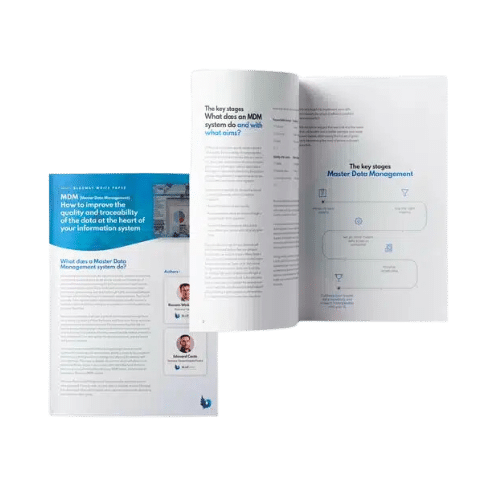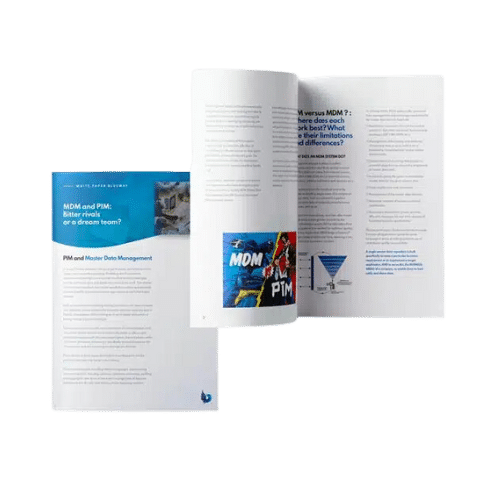Data silos are still a fact of life for very many organisations. Fragmented by the practices employed by various departments, and the vast volumes of data collected, this data is nonetheless of strategic value to the business. It is essential that there is a reliable, useable, single view of data that can be leveraged company-wide. Whether it is customer data, financial data, or goods logistics data, eliminating data silos requires the causes to be identified first. Then appropriate organisational fixes and best working practice can be put in place, and the right applications used.
Data silos are harmful operationally, strategically, and to the information system generally
Data silos mean business data is compartmentalised within departments, instead of being leveraged by circulating around the company. The result is lost efficiency, in employees’ daily routines, in technical processes, and in business decision-making.
For employees, the practical impact of such data silos is to:
- Make them less efficient, and reduce the time they have available, a result of being obliged to find and filter the data they need
- Create duplicate data across departments. Silos prevent reconciliation and elimination of duplicates
- Make checking data lifecycles and obsolescence more difficult; this can be a significant compliance issue, including for GDPR
- Restrict data enrichment and collaborative working – if more than one version of data items exists simultaneously, the overall picture is blurred and departments act inconsistently
More generally, this form of holding data prevents functional views from being shared, while sharing is crucial to the accuracy and quality of the final product or service.
Silos also have major impacts on the movement of data traffic, such as:
- Larger IT footprint: silos take up more storage space, and contain duplicate data
- Cross-referencing data from different departments is a complex matter, taking up technical resources.
- The circulation of data between compartmentalised departments is slow and prone to interruptions, which is harmful not only to business efficiency, but also to the user experience. It is accordingly impossible to introduce an omni-channel customer journey.
Lastly, the company’s decision-making bodies suffer the fallout from silo-based organisation – using compartmentalised, obsolete, duplicate data can result in the wrong strategy and the taking of decisions that are harmful to the business.

Master Data Management : data quality and traceability at the heart of your information system
The three sources of data silos
Three main sources of data silos can be identified:
1. A compartmentalised organisation of business departments
- Historically, departments are in the habit of working with their own files, using their own sets of tools, and without preparing data for sharing (Excel spreadsheets, warehouse management systems, HR applications, etc.).
- Standards, procedures and methods differ from one department to another and make use of different data collection and storage methods (for instance, online and offline channels are frequently separated).
- The organisation of the business itself can foster a silo approach; a re-org could usefully permit cross-functional circulation of data.
2. An unsuitable information system
- The IS architecture might not have been originally designed to convey data all around the business. Over the course of time, applications, formerly run on separate proprietary platforms, have formed disparate system tiers that do not communicate a great deal.
- The business does not always have applications designed to transport data (ESB, EAI, etc.) available
- Data collection and transport tools do not necessarily take certain specific business factors into account
- Data is neither centralised nor unified (single view). In the absence of master data records, business practices are compartmentalised into departments
3. Mistrust of openness in data
- Each department generally wishes to retain its methods and individuality
- Technological changes entail effort and time-consuming changes to routines
- Departments are fearful of losing control over the use made of their data

MDM versus PIM: bitter rivals or a dream team ?
Introducing a single version of data into the business
Non-unified data considerably hampers business efficiency. Effective data integration must therefore be a priority.
Data Governance makes it easier to control data streams and organise the business around a single version of the truth, which is then relayed from one department to another and kept up-to-date in real time by the relevant business lines. This requires:
A change in staff culture: teams now need to view data as a business tool, and not as information restricted to their department alone. Collaborative systems will support this change in culture and facilitate the maintaining of control over data enrichments from several sources.
Support from IT: the software used should result in data sharing becoming embedded into everyone’s daily routine. It is vital to choose applications that harmonise the information system and accelerate business data flows, with no restrictions on formats.
Greater cross-functionality in processes, which need to be fluid and not restricted by application silos and compartmentalisation between departments. Taking a step back to review who is involved in each process can improve process performance.
In practice, to structure data streams and achieve this triple objective, two systems are essential, namely master data management and an ESB application bus. These combine to define and convey a single version of ratified data that is simple to enrich and share between business functions.
MDM (Master Data Management)
A central master data repository serving to retain control over the quality and completeness of data. Business rules make it possible to adapt very precisely to the working practices of the business and share reliable data.
A data quality assurance exercise must be carried out beforehand, to eliminate duplicates and adapt data to the working practices of the business.
ESB (Enterprise Service Bus)
An application bus to enable communication between applications regardless of their data format.
Data streams are simplified and data can be enriched by process participants completely transparently.
ESB introduces coherent, supervised circulation of data, simplifying data sharing between departments and boosting functional departments’ engagement.
Beyond dismantling data silos, IS re-engineering improves application availability and therefore business efficiency. A virtuous circle that ultimately benefits decision-making and strategy.
The Blueway modules exploit how well MDM and ESB fit together, so that the data carried between your applications is reliable, up-to-date and of immediate benefit to business processes. Silos can consequently be eliminated while imposing no burden on employees, delivering real synergies within the organisation.

Want to discuss your data management challenges with an expert?





